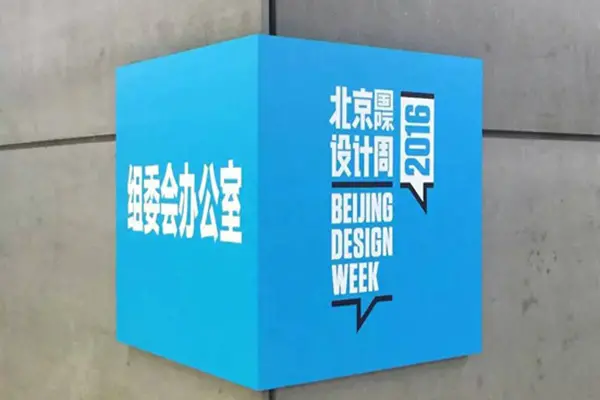Beijing Design Week focuses on work that connects with people's daily reality, Sun Yuanqing reports. Sun Yuanqing For the past seven years, Beijing Design Week has been a celebration of every facet of design. But now it is increasingly involved with real-life issues.
The Design Intelligence Award, the latest addition to its agenda, was the highlight of this year's focus on industrial design.
As part of the 2016 Beijing Design Week, the DIA Excellent Works Exhibition Tour opened at the World Art Museum at the China Millennium Monument, the main venue for Beijing Design Week, on Sept 25. The exhibition runs through Oct 7.
As for the award, which was instituted jointly by the China Academy of Art and the China Industrial Design Association, it is referred to as "the first academic award of industrial design in China".
The prize was given to around 100 pieces of work, which were selected from a pool of 2,511 entries spanning 30 countries.
The entries covered areas like "cultural innovation, living wisdom, industrial manufacturing and leading technology".
The first DIA Award Ceremony was held in May in Hangzhou, capital of East China's Zhejiang province.
Based on the theme of "Collective Wisdom, Intelligent Future", the winning pieces were divided into two categories: life and culture; industry and future.
The organizers said that the inaugural year of the award was challenging, as they had to recruit not only strong candidates, but also a top-notch jury.
TheFotileSinkDishwasherisoneofthewinnersoftheDesignIntelligenceAward,anadditiontoBeijingDesignWeekthisyear.Photo:ChinaDaily
The judges included Brandon Gien, Michael Young and Gordon Bruce, says Hang Jian, vice-dean of China Academy of Art in Hangzhou.
Speaking about Beijing Design Week, Wang Yudong, general manager of the event, says the week is a gathering of the design community.
It is now increasingly involved with a consumption and industrial upgrade that is taking place in China, and it intends to provide solutions for contemporary cities, he says.
Referring to the award, he says: "Although this is a new project, it is attracting a lot of participation. This indicates a clear interest in the Chinese market, and it is huge support to our industry upgrade."
Among the prizewinning projects on display at the exhibition that caught the eye were the Windclear nose filter, which protects the respiratory system.
Using innovative materials and design, the filter is easy to wear and effective in filtering polluted air. Moreover, it is almost invisible.
The Drinkable Book was another outstanding offering at the show.
The "book", which encourages behavioral change through its education content, is also an affordable and convenient water filter as its pages can be used as water filters.
Designed for use by the more than 2 billion people around the world who live on less than $2 per day, it needs as little as one penny a day to produce clean, safe water.
Each page can filter water for a month for one person, and one book can last for about a year.
Then there is the Second Aid disaster prevention kit, designed by Japanese designer Eisuke Tachikawa. It has been created for people who live in disaster prone areas.
Based on the experience of the Great East Japan Earthquake in 2011, the aid kit contains necessities to survive for 72 hours after a disaster.
A popular exhibit is the Fotile Sink Dishwasher, a 3-in-1 device that combines a kitchen sink, dishwasher, and fruit and vegetable cleaning machine. It is aimed at Chinese consumers.
The dishwasher can wash, dry and sanitize dishes in one step, while saving energy and water.
Other notable exhibits include the Second Skin, developed by designers from the MIT Media Lab, Zhejiang University and the Royal College of Art.
It is a smart garment made with biological materials.
VisitorstakephotosinanartstudiointhehutongareaincentralBeijing.TheareaplayshostavarietyofactivitiesaspartofBeijingDesignWeek.Photo:Xinhua
The garment transforms according to the wearer's own sweat and heat. It allows sweat to evaporate and cools down the body thanks to the special material.
Vehicle owners also have something to cheer about at the exhibition. The Service Robot for Car Market provides car owners with on-site services like washing, polishing, waxing and interior cleaning. So car owners no longer need to go to the service centers.
For notebook fans, the Lenovo Yoga Notebook is on show. The notebook uses the lightest carbon-fiber material available.
The opening of the exhibition was followed by a salon that was themed "Internet+", in which participants discussed the impact of internet technology on the design industry.
Speaking at the salon, Song Jianming, vice-dean of the China Academy of Art, says that the emergence of the internet has provided a huge amount of resources for designers.
"The internet makes things easier for the design industry, from the research stage and communication to 3-D printing, funding channels and marketing," he says.
But Zeng Hui, deputy director of Beijing Design Week's organizing committee, says that it has also had some negative effects.
"To some extent, the internet has affected the organic growth of the manufacturing industry, which we should be cautious about."
Lee Soon-in, president of the Seoul Design Center, says that the internet has changed design education in South Korea, where it is common for students to realize their ideas with 3-D printing.
"The internet also allows designers to access resources online and find new ways to raise money," he says.
(CHINA DAILY)
 简体中文
简体中文

